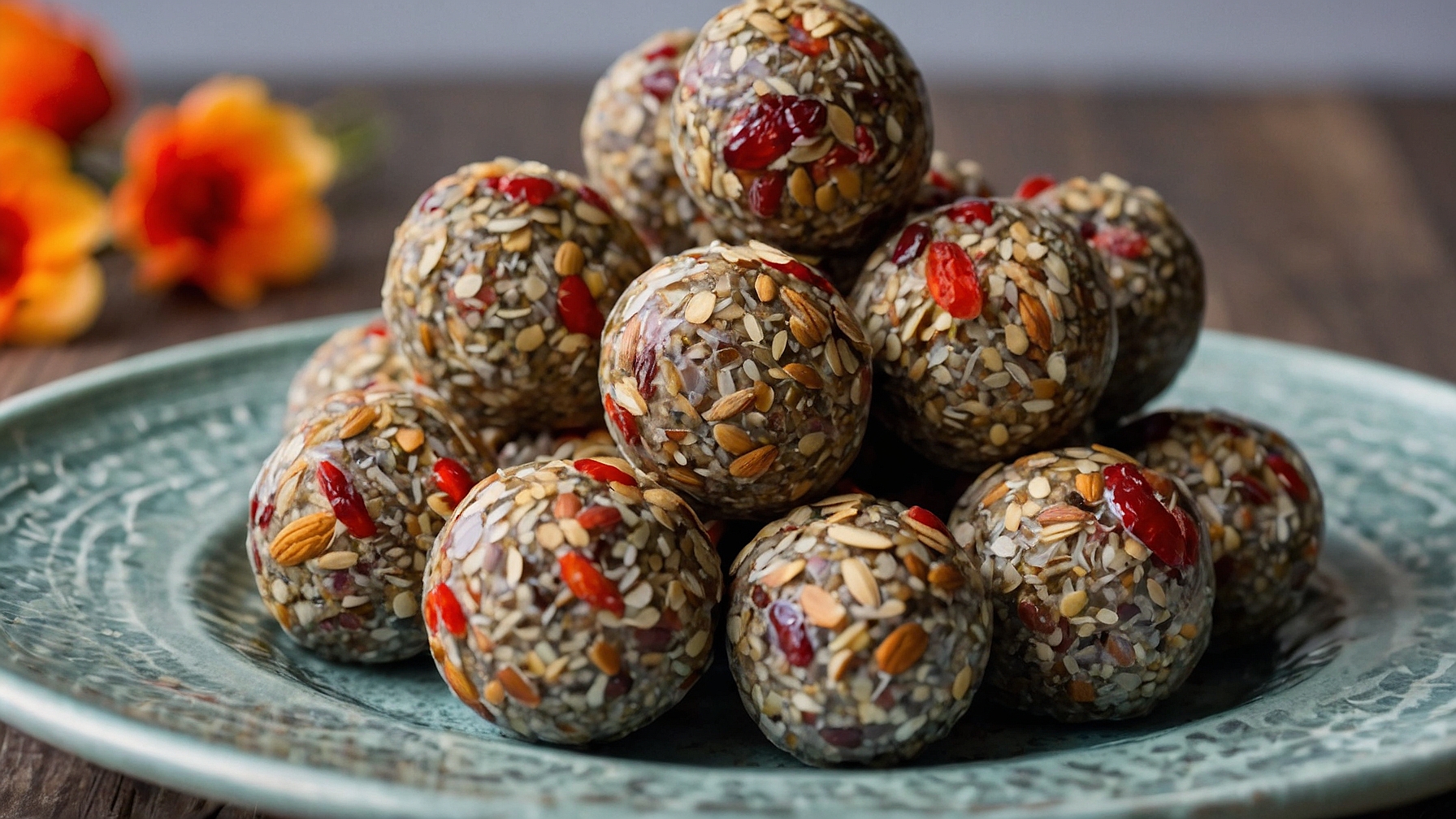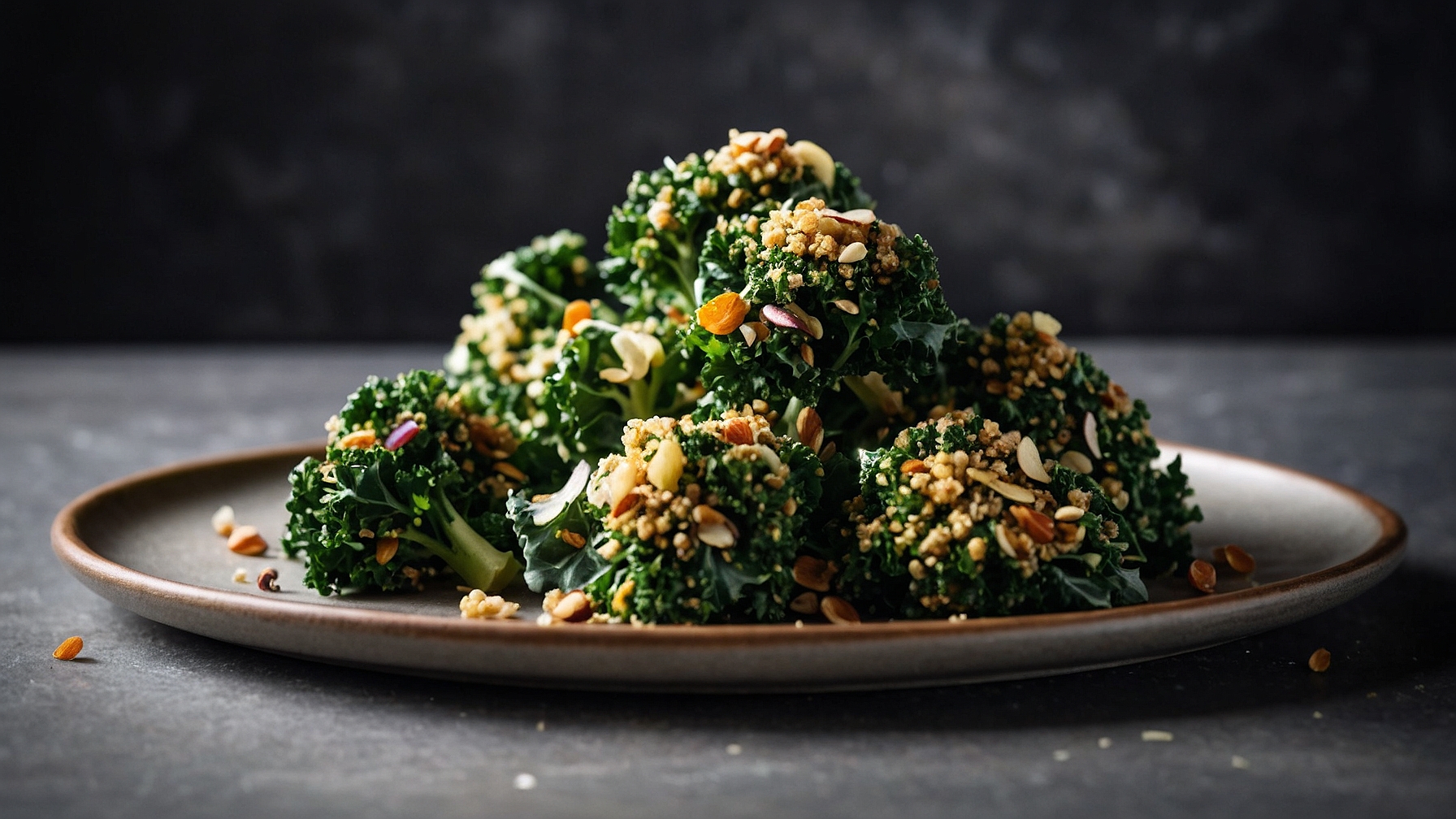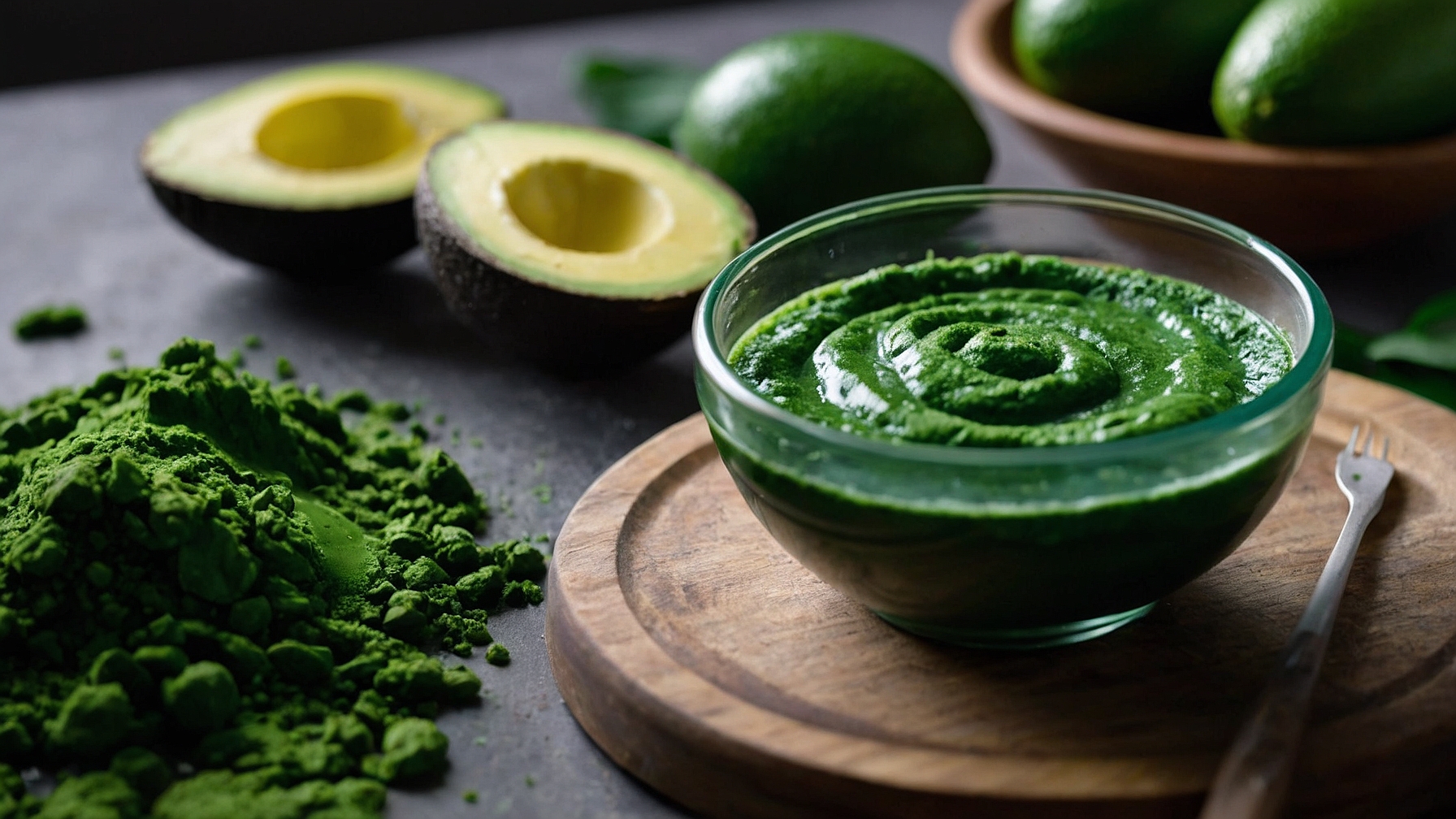Drying Porcini Mushrooms: Effective Techniques and Tips
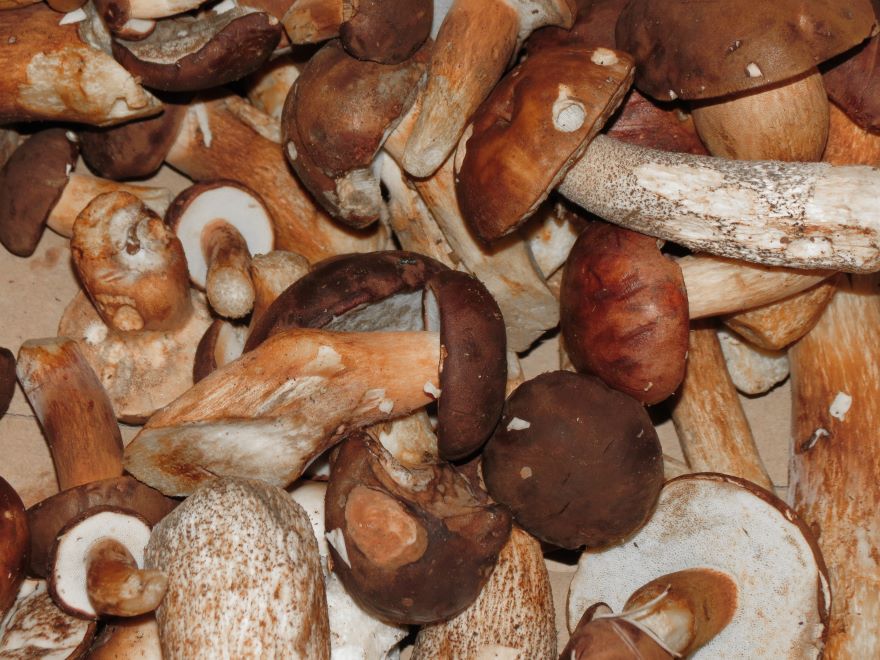
Drying porcini mushrooms is a fantastic way to preserve their robust, earthy flavor and unique umami taste while extending their shelf life. As a mushroom lover, I’ve found that dried porcini mushrooms not only make for a delicious and versatile ingredient, but also help me experience the full richness of their flavor throughout the year. Plus, they’re quite simple to dry at home and add a gourmet touch to various dishes, particularly when done right.

In the process of drying porcini mushrooms, it’s crucial to be mindful of selecting high-quality mushrooms, cleaning them properly, and choosing the best method to dry them effectively. I’ve explored different techniques over the years, from air drying to using a food dehydrator, and found that each has its advantages depending on one’s preferences and equipment availability. Once dried, storing them correctly is essential to maintain their unique characteristics and ensure their optimal culinary value.
Key Takeaways
- Drying porcini mushrooms enhances their flavor and extends shelf life.
- Proper cleaning, selection, and drying methods are vital for outstanding results.
- Storing dried porcini correctly helps maintain their quality and culinary value.
The Benefits of Drying Porcini Mushrooms
When I dry porcini mushrooms, I’ve found that the process not only preserves them but also enhances their exceptional qualities. One of the most notable features of dried porcini mushrooms is the intensified flavor that develops during the drying process. The drying process allows the rich, earthy taste of porcini mushrooms to become more concentrated, potentially enriching any dish they are added to.
Another reason I love using dried porcini mushrooms is the texture they offer. Dried mushrooms have a firm, meaty consistency that works wonderfully in various dishes, from pasta sauces to hearty soups and stews. Simply rehydrate them in warm water and they’re ready to be incorporated into any meal while retaining the desired texture.
One of the main attractions of porcini mushrooms is their umami flavor, which is often referred to as the “fifth taste.” This unique flavor adds a certain depth and complexity to dishes, and I’ve rnoticed that drying porcini mushrooms further accentuates this umami quality. It’s a fantastic way to elevate your cooking and enhance the flavors of various ingredients in your dishes.
I also value the fact that drying porcini mushrooms helps retain their nutritional benefits. Porcini mushrooms are known to be a valuable source of nutrients and antioxidants. By drying them, I can continue to reap these benefits without worrying about spoilage that might occur if I were to store fresh mushrooms for an extended period.
In summary, I believe that drying porcini mushrooms is an excellent way to preserve their fantastic flavor, texture, umami richness, and nutritional value.
Selecting and Preparing Porcini for Drying
Choosing the Right Porcini
When it comes to drying porcini mushrooms, it’s essential to pick the right specimens. I like to find fresh porcini in the wild, as they have a distinct, earthy flavor. When I’m foraging for wild mushrooms, there are a few things I keep in mind to ensure I find the best porcini:
- Size: Look for porcini with a sturdy stem and a rounded cap. Avoid mushrooms that are too small or too large, as they might not dry evenly.
- Color: Fresh porcini should have a brown cap and a white to yellowish stem. Stay away from mushrooms with red parts, as they could be toxic.
- Texture: The area under the cap should have a spongey texture, without any signs of decay or damage.
It’s essential to remember that when you’re foraging for porcini mushrooms, always exercise caution and make sure you can positively identify the mushrooms before consuming them.
Cleaning Techniques Before Drying
Before I begin the drying process, I make sure to thoroughly clean my freshly picked porcini mushrooms. Here are the steps I follow to ensure my mushrooms are prepared for drying:
- Remove dirt: Using a soft brush or a dry paper towel, gently brush away any dirt or debris from the cap and stem of the mushroom. Avoid using a damp cloth, as excessive moisture could encourage the growth of mold or bacteria.
- Clean stubborn grime: If you encounter any stubborn grime, you can use the edge of a small knife or a soft toothbrush to gently scrape it away.
- Trim: Carefully inspect each mushroom and remove any damaged or deteriorated areas using a sharp knife.
By selecting high-quality porcini mushrooms and properly cleaning them, I’ve been able to consistently achieve great results when drying these delicious fungi, preserving their unique flavors for later use in various recipes.
Drying Methods for Porcini Mushrooms
Using a Dehydrator for Optimal Results
In my experience, using a food dehydrator is the most efficient method for drying porcini mushrooms. To prepare the mushrooms, I trim off the bottom of the stems and discard any tough or woody parts. Then I cut them into thin slices or small pieces and rinse under cold water. To remove excess moisture, I pat them dry with a clean towel.
After preparing the mushrooms, I arrange them on the dehydrator trays, ensuring they’re in a single layer with ample space between each piece. Once the dehydrator is set to a suitable temperature, usually around 130-140°F (54-60°C), I let it do its magic for about 4-8 hours. It’s essential to check on the mushrooms every couple of hours, as they may dry at different rates.
Alternative Air Drying Techniques
If using a dehydrator is not an option, there are several alternative methods to dry porcini mushrooms, each with its own set of advantages and disadvantages.
- Room Temperature Air Drying: This method works best in a dry environment with low humidity. I spread the mushroom pieces evenly on a tray lined with paper towels or a clean cloth. Leaving them in a well-ventilated room, I flip the mushrooms every couple of hours to promote even drying. This process usually takes about 2-3 days for the mushrooms to completely dry.
- Oven Drying: I preheat my oven to its lowest temperature setting, ideally around 150°F (65°C). Then, I arrange the mushroom pieces on a wire rack and place them inside the oven. With the door slightly open to release moisture, I keep the mushrooms in the oven for 4-6 hours and check them periodically.
- Electric Fan: Another method I’ve tried involves using an electric fan to speed up the air drying process. I set up the fan beside the tray of mushroom pieces and direct the airflow toward the mushrooms. Although effective, this method can be noisy and is best suited for use in a well-ventilated area.
Remember, the goal is to ensure that the porcini mushrooms are dry enough to break, rather than bend. Whichever method is used, the key is to maintain consistent airflow, temperature, and humidity. Properly dried mushrooms can be stored in airtight containers for several months, preserving their rich and delicious flavors for future use.
Storing Dried Porcini Mushrooms
The Right Containers for Longevity
When it comes to storing dried porcini mushrooms, I always opt for airtight containers to ensure their longevity. Moisture can significantly reduce the shelf life of dried mushrooms, so it’s essential to prevent any exposure to moisture. I find that using plastic resealable bags or glass canning jars such as Mason jars, work the best for this purpose. The glass jars should have tight-fitting, screw-on lids to maintain an airtight seal.
Another crucial aspect of storage is the use of oxygen-absorbing packets. Including these in the storage container can help to reduce the risk of mold growth and prevent any changes in the texture or flavor of the dried mushrooms. Additionally, I recommend storing your dried porcini mushrooms in a cool, dark place, such as a pantry or cupboard, to maximize their shelf life.
Effective Use of Storage Space
When it comes to organizing my storage space, I usually follow these tips to ensure my dried porcini mushrooms stay fresh and ready for use:
- Separate the mushrooms by size or type, placing them in different containers or sections of the same container. This makes it easier to grab the right amount and type of mushrooms when needed.
- Label the containers with the date of drying to keep track of how long they’ve been stored. This is especially helpful if you have multiple batches at once.
- If you’re running low on storage space, you can also opt to freeze your dried porcini mushrooms. Freezing can help to preserve their quality and extend their shelf life. Just ensure that they’re stored in a moisture-proof container, such as a resealable plastic bag or airtight glass jar, to prevent any freezer burn.
- When using mushrooms from the freezer, there’s no need to defrost them first. You can add them directly to your dish or rehydrate them by soaking them in warm water for about 20 minutes.
By following these storage tips and using the right containers, I find that my dried porcini mushrooms stay fresh and flavorful, ready for use in a variety of delicious dishes.
Using Dried Porcini in Recipes
I love using dried porcini mushrooms in my cooking because they add an incredible depth of flavor to various dishes. In this section, I’ll share with you some techniques for rehydrating dried porcini and incorporating them into recipes.
Rehydrating Techniques for Full Flavor
To get the most out of your dried porcini, you’ll need to rehydrate them first. Here’s my favorite method for rehydrating dried porcini mushrooms:
- Place the dried porcini in a bowl.
- Pour boiling water over the mushrooms, ensuring they are fully submerged.
- Allow the mushrooms to soak for at least 15 minutes.
- Gently remove the mushrooms from the water and give them a gentle squeeze to remove excess liquid.
Pro tip: Don’t discard the flavorful soaking liquid! You can use it as all or part of the cooking liquid in your recipes, like a risotto or soup.
Incorporating Dried Porcini into Dishes
Now that your dried porcini mushrooms are rehydrated, you can incorporate them into a variety of dishes. Here are some of my favorite recipes that include dried porcini:
- Risotto: Dried porcini make an excellent addition to a classic risotto. Simply add the rehydrated mushrooms and some of the soaking liquid to your rice and continue cooking as usual.
- Soup and stews: Dried porcini add a rich, earthy flavor to soups and stews. Just chop the rehydrated mushrooms and simmer them with your other ingredients.
- Pasta dishes: Dried porcini can be a delicious addition to pasta dishes like spaghetti, lasagna, and fettuccine Alfredo. Simply slice the rehydrated mushrooms and sauté them with garlic and olive oil before adding them to your pasta sauce.
By following these simple techniques and incorporating dried porcini into your favorite recipes, you’ll add a whole new dimension of flavor to your dishes. I hope you enjoy experimenting with this versatile ingredient as much as I do!
Frequently Asked Questions
How can one identify genuine Porcini mushrooms from their look-alikes?
It’s essential to correctly identify genuine Porcini mushrooms when foraging to avoid consuming toxic look-alikes. I always look for a few key characteristics to distinguish Porcini mushrooms. To start, they have a brown, slightly convex cap with white pores under the cap instead of gills. The stem is thick and slightly club-shaped. Additionally, the flesh should not change color when exposed to air or bruised. For more information on identifying Porcini mushrooms, check out this guide on how to safely forage Porcini mushrooms.
What methods are effective for drying boletes without a dehydrator?
I have had success using several methods for drying Porcini mushrooms without a dehydrator. Options include air drying, oven drying, and using a microwave. For air drying, slice the mushrooms and place them on a wire rack in a cool, well-ventilated area with indirect sunlight. This can take up to three days to dry completely. For oven drying, place the sliced mushrooms on a baking sheet and bake at a low temperature (150-200°F) for a few hours, checking frequently for dryness. Microwaving can also be used for smaller amounts, placing the sliced mushrooms between layers of paper towels and microwaving for 30 seconds to 1 minute increments until dry.
What is the typical price range for Porcini mushrooms in the market?
The price range for Porcini mushrooms can vary depending on factors such as the season, location, and quality. Generally, fresh Porcini mushrooms are more expensive than dried ones. In my experience, fresh Porcini can be priced anywhere from $20 to $50 per pound, while dried Porcini usually falls within the range of $20 to $40 per pound.
During which season are Porcini mushrooms most commonly harvested?
In my region, Porcini mushrooms are typically found during the fall season, specifically between September and November. However, the season for Porcini mushrooms can vary depending on the geographic location and climate. In some areas, they may appear as early as spring.
How can worms be detected and removed from Porcini mushrooms?
Worms are a common issue when harvesting Porcini mushrooms. To detect them, I carefully inspect each mushroom while cleaning. Look for small holes and tracks in the flesh, which may indicate the presence of worms. To remove worms, soak the mushrooms in saltwater for 30 minutes to an hour, which will encourage the worms to exit the mushroom. After soaking, rinse the mushrooms thoroughly under cold water and pat them dry.
What are the best practices for preserving Porcini mushrooms after drying?
After drying Porcini mushrooms, it’s essential to store them properly to maintain their flavor and quality. I usually store them in airtight containers like glass jars or resealable plastic bags, away from direct sunlight and moisture. They should be kept in a cool, dark, and dry place, like a pantry. Properly stored dried Porcini mushrooms can last for several months.
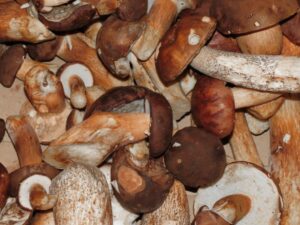
*We may earn a commission for purchases made using our links. Please see our disclosure to learn more.


